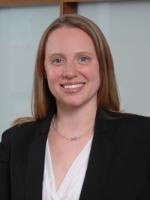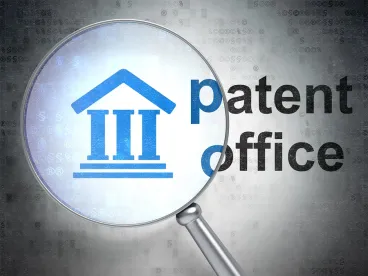The United States Patent and Trademark Office (USPTO) has announced revised guidance (2019 Revised Patent Subject Matter Eligibility Guidance) for evaluating subject matter eligibility of patent claims. The new guidance, published in the Federal Register on January 7, 2019, and effective immediately for all applications, is intended to help Examiners determine whether a proposed patent claim is directed to an abstract idea.
These new guidelines provide a two-prong approach to how an Examiner makes this determination under Step 2A of the Alice/Mayo test. These new guidelines supersede the “Eligibility Quick Reference Sheet Identifying Abstract Ideas” from the USPTO.
Under Step 2A prong one, Examiners evaluate whether a claim recites a judicial exception. The new guidance provides for groupings of key concepts courts have found to be abstract: mathematical concepts, certain methods of organizing human activity, and mental processes. Claims reciting matter that does not fall within these groups is not abstract.
The new guidance aims to clarify the analysis and improve consistency and predictability. Since Alice, courts have assessed whether subject matter is abstract by comparing the disputed claims to claims already found to be directed to abstract ideas. The USPTO issued guidance to Examiners detailing these Federal Circuit decisions with notes indicating whether the claim was abstract. While this approach worked for some time following Alice, the USPTO has determined it is no longer practical. The number of cases decided by the Federal Circuit continues to increase and inconsistent rulings in similar subject matter have made it more difficult for Examiners and Attorneys alike to determine with some predictability whether a claim will be found abstract.
Under the new guidelines, Examiners must now:
-
Identify the specific limitation(s) in the claim under examination (individually or in combination that the examiner believes recites an abstract idea; and
-
Determine whether the identified limitation(s) fall within the subject matter groupings of abstract ideas enumerated in the new guidance.
If the claim does not recite a judicial exception, then the analysis is complete. The claim is not directed to a judicial exception and the claim is patent eligible.
If the claim does recite a judicial exception under Step 2A prong one – as determined by comparison with the newly defined groups – the Examiner must determine whether the claim is “directed” to that abstract subject matter under Step 2A prong two. In this evaluation, the Examiner must now determine whether additional elements are claimed that integrate the judicial exception into a practical application of the exception. “A claim that integrates the exception into a practical application will apply, rely on, or use the judicial exception in a manner that imposes a meaningful limit on the judicial exception, such that the claim is more than a drafting effort designed to monopolize the judicial exception.”

Under the new guidelines, Examiners must evaluate whether the “practical application” of the claim by:
-
Identifying whether there are any additional elements recited in the claim beyond the judicial exception(s); and
-
Evaluating those additional elements individually and in combination to determine whether they integrate the exception into a practical application, using one or more of the considerations laid out by the Supreme Court and the Federal Circuit.
Considerations indicative that the judicial exception is integrated into a practical application include:
-
An additional element reflects an improvement in the functioning of a computer or improvement to other technology or technical field;
-
an additional element that applies or uses a judicial exception to effect a particular treatment or prophylaxis for a disease or medical condition;
-
an additional element implements a judicial exception with, or uses a judicial exception in conjunction with, a particular machine or manufacture that is integral to the claim;
-
an additional element effects a transformation or reduction of a particular article to a different state or thing; and
-
an additional element applies or uses the judicial exception in some other meaningful way beyond generally linking the use of the judicial exception to a particular technological environment, such that the claim as a whole is more than a drafting effort designed to monopolize the exception.
Considerations indicative that an additional element is not integrated into a practical application include:
-
An additional element merely recites the words ‘apply it’ (or an equivalent) with the judicial exception, or merely includes instructions to implement an abstract idea on a computer, or merely uses a computer as a tool to perform an abstract idea;
-
an additional element adds insignificant extra-solution activity to the judicial exception; and
-
an additional element does no more than generally link the use of a judicial exception to a particular technological environment or field of use.
If a claim fully integrates the judicial exception into a practical application, then the analysis is complete and the claim is patent eligible. If the judicial exception is not fully integrated into a practical application, then further analysis is required under step 2B of the Alice/Mayo test.
The new guidance also provides for oversight regrading rejections involving new kinds of abstract subject matter. If a claim does not have an element that falls within one of the abstract groupings defined under Step 2A prong one, but the Examiner feels that it should be treated as reciting an abstract idea, the Examiner should first consider whether the recited tentative abstract idea is integrated into a practical application as described under Step 2A prong two. If not, the Examiner should evaluate whether the claim includes additional elements that provide an inventive concept under Step 2B, for which the analysis remains unchanged by this guidance. If not, the Examiner should bring the application to the attention of the Technology Center Director. The Technology Director must approve any rejection of a claim as being abstract but does not fall within one of the groupings of abstract ideas and a justification must be provided detailing why the claim is being treated as reciting an abstract idea.
In sum, the revised guidance seeks to offer more clarity and predictability for Examiners and stakeholders with respect to identification of claims that are directed to abstract ideas. When drafting applications, practitioners should be mindful of the abstract idea groupings and, if the claimed subject matter falls within one of the identified groups, then additional focus should be spent on fully and clearly identifying the practical application and/or the inventive concept.




 />i
/>i

